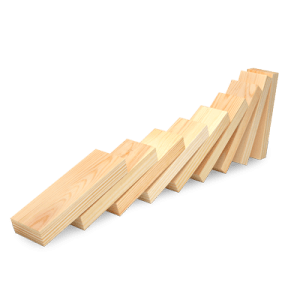Energy transformations and hydroelectricity
Learn how the power of falling water in B.C. is transformed into electricity.

Overview
Using a real-world example from B.C., your students will learn the hydroelectric system, in which the energy of moving water is ultimately transformed into electricity.
Instructions
What you'll need
- Copies of the "Dam cross-section" worksheet for each student
- "Energy transformations and hydroelectricity" slideshow
Review energy forms and transformations
- As a class, review the different forms that energy can take. Lead the discussion towards energy transformations that are happening all around us. Get your students to share examples of energy transformations.
Introduce hydroelectricity as an example of energy transformation
- Share with your students the fact that over 95% of electricity in British Columbia is created by transforming the energy from falling water. Ask them to share what they already know about hydroelectricity, and have them think about the energy transformations that happen in hydroelectric systems.
Watch slideshow and video
- Ask your students to watch for examples of energy transformations while they watch the short video, “How a dam works”. If necessary, show the video a few times, pausing if you need to. As a class, discuss the transformations that are happening:
- Water in the reservoir has potential energy.
- Water at the top of the penstock has gravitational energy.
- Water moving down the penstock has kinetic energy.
- Turbines have mechanical energy as they’re turned by the moving water.
- Generators have mechanical energy as they’re turned by the turbines.
- Generators create electrical energy as magnets spin past coils of copper wire.
- Show slides 3 to 7 of the slideshow and review the different forms of energy and the transformations that take place:
- Slide 3: Identify the dam and the reservoir (Sugar Lake dam on the Shuswap River).
- Slide 4: Water held in the reservoir behind the dam has potential energy (Revelstoke Dam on the Columbia River).
- Slide 5: Water at the top of the penstock has gravitational energy; water moving down the penstock has kinetic energy.
- Slide 6: As the water turns the turbines, the turbines turn the generators, which create electricity.
- Slide 7: Have students describe the path that water takes in a hydroelectric system and identify different energy transformations that take place.
Complete the worksheet
- Hand out the “Dam cross-section” worksheet. Have students draw arrows:
- Arrows that show the path of water should be coloured blue.
- Arrows that show the path of electricity should be coloured yellow.
Modify or extend this activity
- You can reinforce the energy transformations that occur in hydroelectric systems by having students come up with physical movements to represent the different energy transformations that occur, then act them out in sequence. For example:
- Students could pretend to be snowpack by standing rigidly on tiptoe with arms reaching in the air.
- As they “melt” the could become loose and flexible, “flowing” through the classroom towards an imagined reservoir.
- The sequence continues with other movements representing other parts of the hydroelectric system.
- In groups, have students create comic strips that show the path of water in the creation of electricity.
Curriculum Fit
Grade 4 Science
Content
- Energy has various forms
- Devices that transform energy
Curricular competencies
Questioning and predicting
- Observe objects and events in familiar contexts
Processing and analyzing
- Use tables, simple bar graphs or other formats to represent data and show simple patterns and trends
Applying and innovating
- Transfer and apply learning to new situations
Assessments
- Assess your students’ participation in class discussions and pay attention to how their understanding of energy transformations has improved.
- Review the completed “Dam cross-section” worksheets for completion, accuracy and effort.
Teaching Notes
Many energy transformations are involved in hydroelectric systems.
The story of hydroelectricity starts in nature with the water cycle. Snow falls in winter where it collects in high-alpine glaciers and creates a dense, thick snowpack. In the spring, this snowpack melts and the run-off makes its way down the mountain and into streams and rivers. Water collects in reservoirs behind dams.
When water in a hydro reservoir is released it flows through large pipes, called penstocks, to turbines, which are like wheels with blades. In a dam, turbines rotate when fast-moving water hits the blades. The turbines turn generators.
Inside the generator, magnets spin past coils of copper wire, causing electrons to move and converting the mechanical energy of the falling water to electrical energy.







